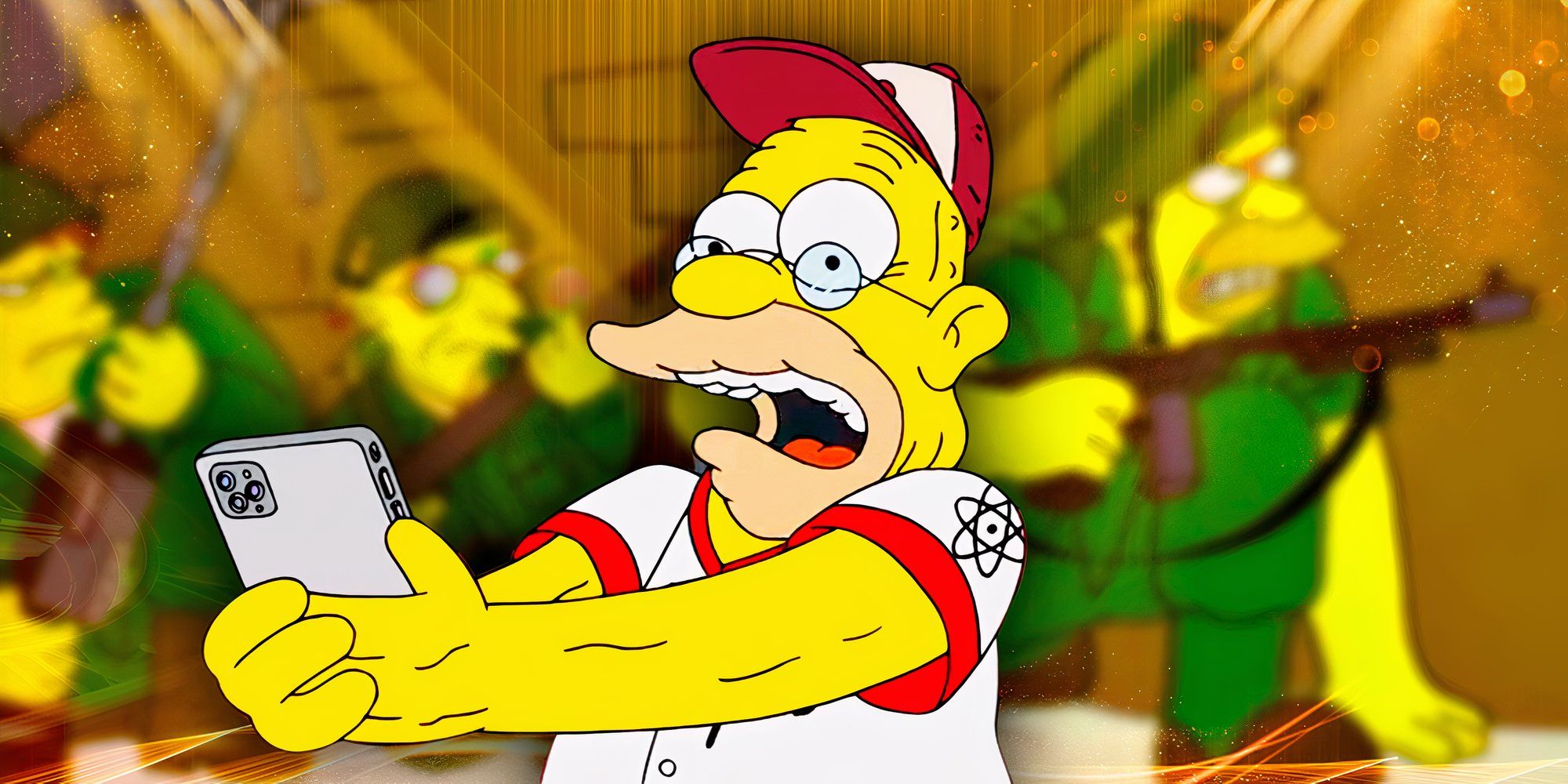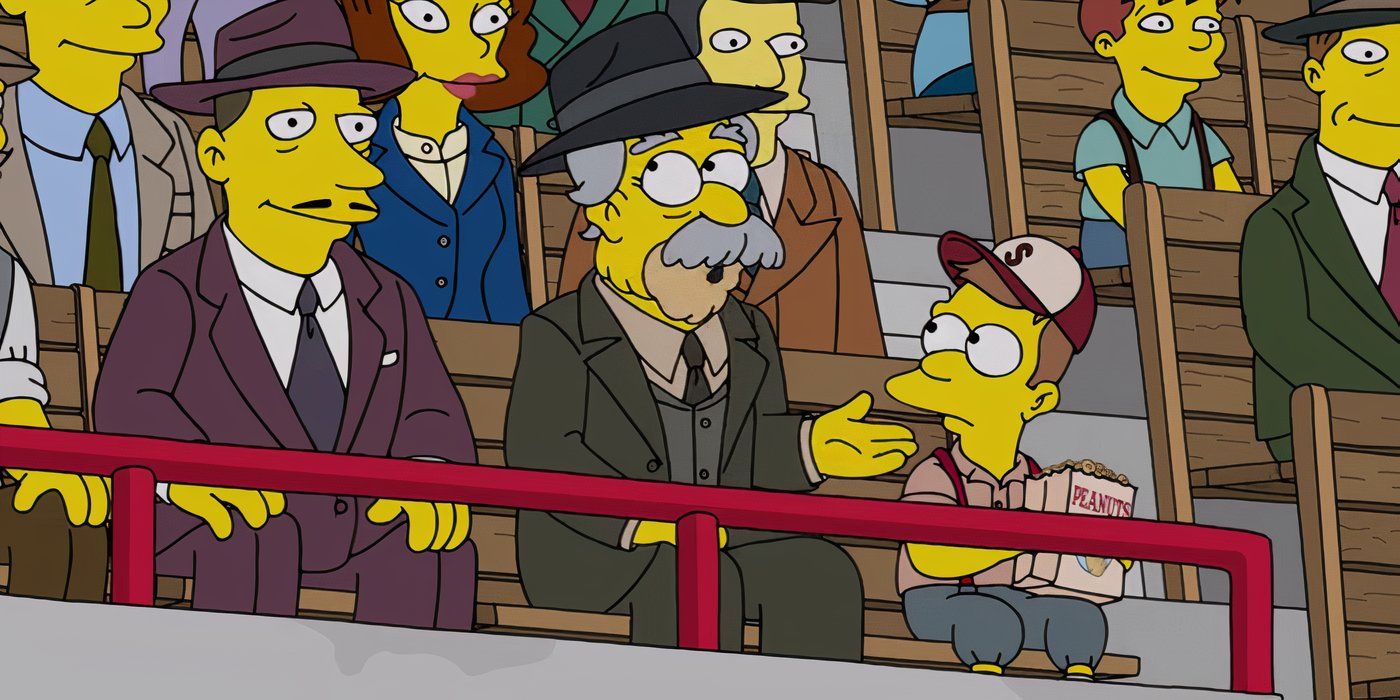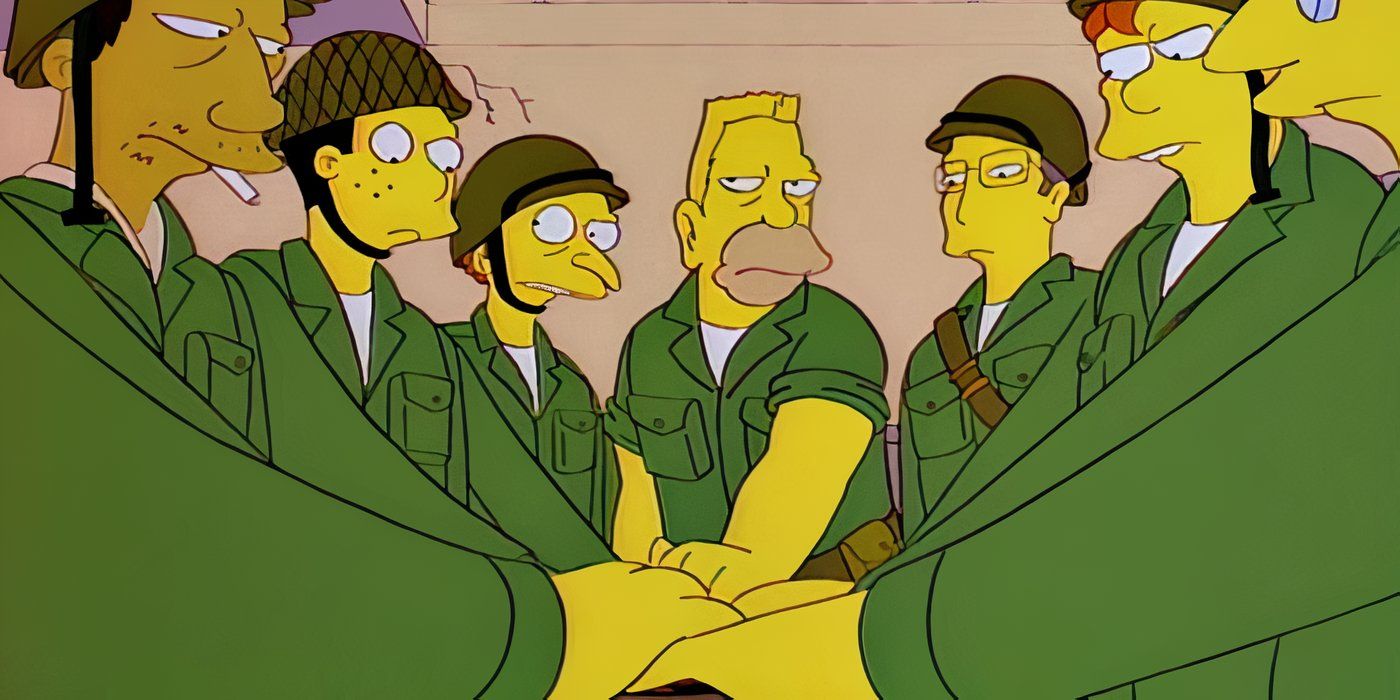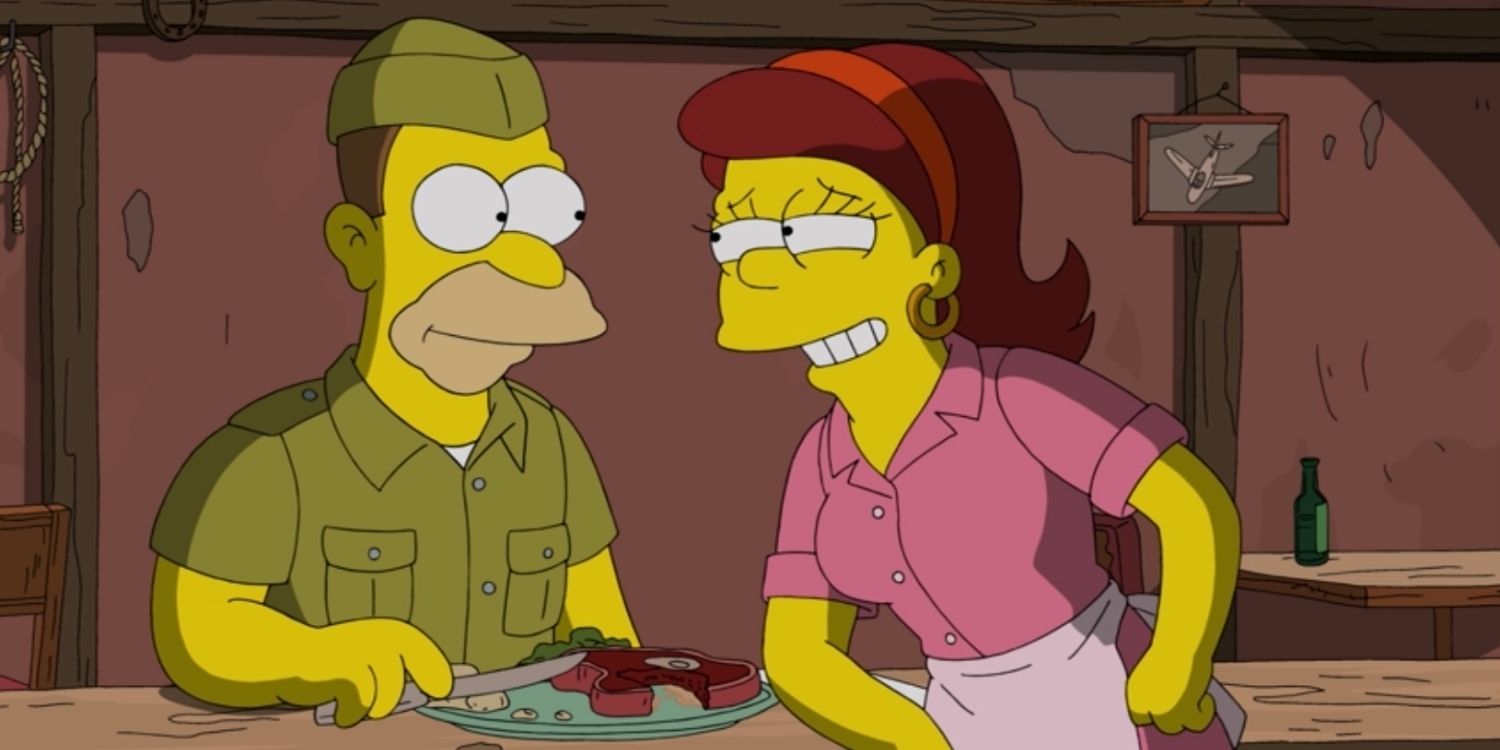[ad_1]
The following contains spoilers for The Simpsons season 36 episode 19, “Abe League of their Moe,” now streaming on HuluThe Simpsons has frequently altered its sliding timeline in the past, but a season 36’s episode just retconned a fan-favorite Golden Age episode of the show out of the timeline. Due to the animated nature of the show, The Simpsons has been able to remain an enduring piece of relevant societal and pop-culture commentary by embracing a sliding timescale. While the characters permenatly remain the same age and their personal backstories are typically consistent, specific details and periods in their backstory are changed, reimagined, or outright erased by the timeline.
Usually, it’s just a minor gag or a backstory aspect that needs to change, but some episodes have become radically different as a result of these changes. The latest of these, which occurs in season 36’s “Abe League of their Moe,” has the side-effect of effectively removing one notable season 7 episode from the current timeline by explicitly changing a key detail of Abe’s backstory. However, it’s a necessary move to keep Abe Simpson a player in the show as a part of The Simpsons‘ static setting yet fluid timeline.
The Simpsons Just Retconned Abe As A Child During World War II
Abe Is A Young Boy In 1944 Instead Of Being A Soldier During World War II
The Simpsons season 36 just retconned Abe Simpson’s age during the events of World War II, which inherently changes or removes a beloved season 7 episode from the show’s timeline. “Abe League of their Moe” focuses on Abe and Moe’s surprising friendship over their shared love of the Springfield Isotopes. For Abe, that fandom stretches back to his childhood. The episode even opens a flashback of a young Abe attending a game in 1944 alongside his own grandfather. While there, the pair carved their names into the stands, giving Abe a deep personal connection to the team and the field.
For much of “Abe League of their Moe,” Abe simply wants to get Bart interested in the game so they can share that experience. In one of the episode’s sweetest beats, Abe carves Bart’s name into the stands alongside his own, signifying their family connection. However, the idea that Abe was a child in 1944 contradicts several previous episodes of The Simpsons. Similar to Abe’s perpetual rival, Mr. Burns, Abe’s exact age has never been explicit in the show. This gives the creatives storytelling liberties. However, this latest change makes it hard to reconcile the fluid timeline with specific episodes.
The Simpsons Repeatedly Made Abe Simpson A World War II Veteran
Early Seasons Of The Simpsons Made Abe Into A World War II Hero
Several episodes of The Simpsons‘ early seasons made Abe into a World War II veteran, which fit with the then-established timeline of Homer and Marge being born in the 1950s and attending high school in the 1970s. As with many of Abe’s frequent tall tales, a large source of comedy surrounding the character was the inability to tell which World War II stories were true and which were made up. There were several gags about Abe’s actions during the war, with season 4’s “Whacking Day” overtly pointing out that any of these stories could be made up by Abe.
However, as the timeline has progressed, [Abe being a WWII veteran has] been harder to justify in-universe, with season 36 seemingly abandoning the concept as a whole.
That wasn’t the case for his biggest World War II episode, however. The biggest episode impacted by this retcon regarding Abe’s age is season 7’s “Raging Abe Simpson and His Grumbling Grandson in ‘The Curse of the Flying Hellfish.'” That episode revealed that Abe was a grown man during the events of World War II and led an infantry platoon of soldiers from Springfield. Dubbed the Flying Hellfish, the group was convinced to steal artwork from the defeated Germans by private Monty Burns, leading to a long-term rivalry between the two men that has continued outside of the episode.
Several jokes in the episode directly reference their time in the European theater, especially when Abe nearly shoots Hitler. The main plot of the episode, including the theft of the priceless German artwork by American soldiers, was inspired real-life events. The emotional core of the episode is Bart learning to respect his grandfather and believe some of his claims, cementing the idea that Abe really did serve in World War II. However, as the timeline has progressed, that’s been harder to justify in-universe, with season 36 seemingly abandoning the concept as a whole.
Why Abe Simpson Can’t Still Be A World War II Veteran
Abe Would Be Over A Hundred Years Old If He Was Still A WW II Veteran
Making Abe into a child in 1944 means that in the current canon of The Simpsons, Abe could not have been a member of the Flying Hellfish. Abe has always been one of the characters impacted by the sliding timescale, with season 36’s “Shoddy Heat” shifting events so that Abe was a single father in his physical prime during the 1980s. However, the show has always been able to shift around, never outright negating previous episodes by leaving his military service vague.
As a result, multiple episodes have positioned Abe as a member of different branches of the military, but with a lot of ambiguous elements, such as time period and conflict. However, that simply can’t work for the Flying Hellfish. That episode is deeply rooted in the imagery and real-life stories of that conflict, and is next to impossible to reimagine with a more ambiguous conflict. It also works against the show’s natural flexibility by giving Abe a clear and specific reference point with real-life history.
At various points in The Simpsons, Abe has been portrayed as a member of the Army, the Navy, and the Air Force, as well as having fought in numerous different conflicts.
Abe being a World War II veteran, is hard to justify in the present day without killing the character off, even after other modern episodes like season 30’s “My Way or the Highway to Heaven” found ways to keep Abe a soldier in that era. Being a WW II veteran severely ages Abe now in a way it simply didn’t decades ago. Suspension of disbelief over the modern setting of the show would break under the weight of characters like Abe still being World War II veterans and also running around in Springfield.
However, Abe aging realistically after WW II would be a key indicator that The Simpsons timeline is moving beyond its specific but timeless setting, something the show has mocked in episodes like season 36’s “Bart’s Birthday.” Abe can always be old, but he can never be too old to break the illusion that The Simpsons is always happening in the present day. In that sense, “Abe League of their Moe” changing the timeline so that Abe wasn’t a World War II veteran makes sense for the character now, but does cost the timeline one of its most entertaining Abe episodes.
Abe’s Military Service Is Still Crucial To The Character
Abe Simpson’s Backstory Can Be Consistent Even If Specific Historical Events Aren’t
There are some ways The Simpsons has adjusted Abe’s military service while retaining it as a key background trait of the character. Abe’s harsh military perspective makes him a perfect foil to the more liberated mindset of Mona and fits well his relationship with Homer as a distant but loving father. In later episodes, Abe’s military service was confirmed by other characters but his details about run-ins with historical figures like JFK or Jack Kerouac were ambiguous enough to be made up. This is the best way to approach Abe’s history, leaving it open to changes without erasing previous stories.
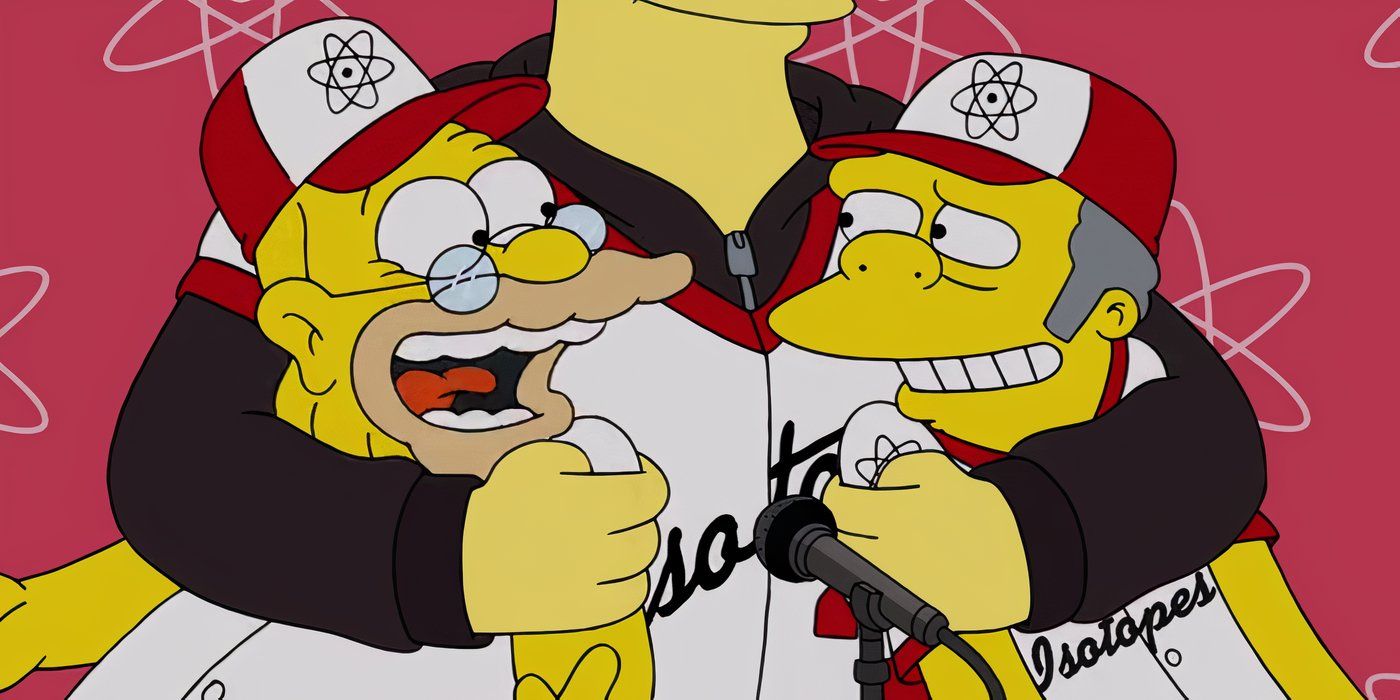
Related
The Simpsons Season 36 Reunites One Of Their Wackiest Pairings For A Surprisingly Emotional Arc
The Simpsons season 36 pairs up two important supporting characters whose most prominent previous pairing was a wacky short from 27 years ago.
This means the subtle but important element of Abe’s backstory can remain part of the character, but the specific examples of his age can be left vague. This is better in the long run for the character and presents lots more opportunities for fresh stories, as seen with “Abe League of their Moe,” even as that specific dating of the episode risks being changed in the future as well. The specificity of “The Curse of the Flying Hellfish” makes it an unfortunate casualty of the sliding timescale in The Simpsons, which is a crucial aspect for the show’s longevity.
[ad_2]
Source link
